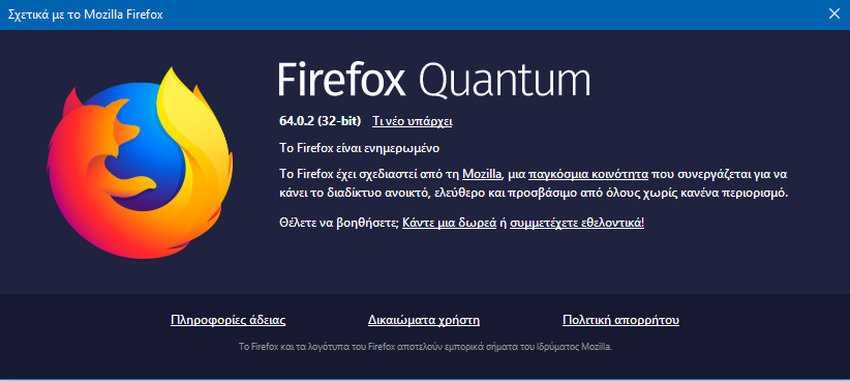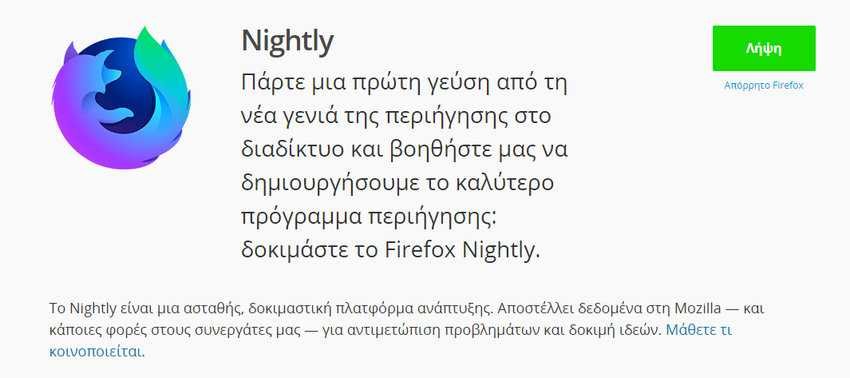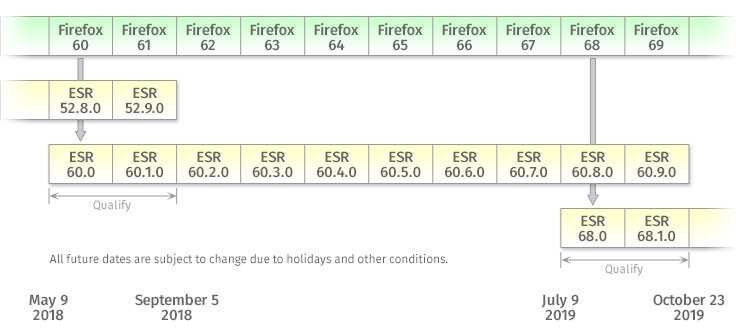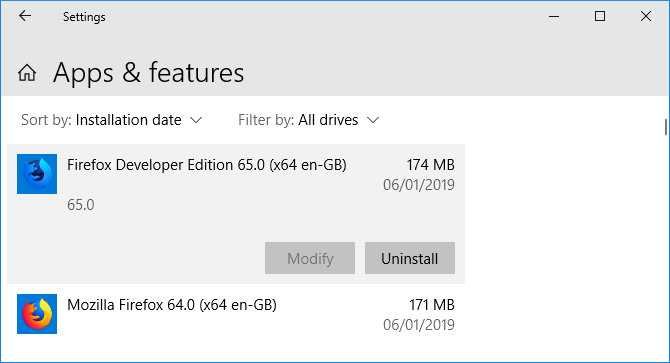You think there is only one version of Firefox? In fact, there are many alternative versions of the browser, providing experimental features or development tools. And they are all available for you to use and experiment with.

In this article you will see what all these versions offer, how they differ from each other and how they are connected. You will also learn how to downgrade from one version to a lower one if you deem it necessary.
The five different versions of Firefox
1. Firefox

This is basic version of Firefox which most users use. You might see it as Firefox Quantum. It's the name that Mozilla gave the browser after a major update it made in late 2017, offering improved speeds and less memory usage.
Mozilla Firefox (originally called Phoenix) is in the hands of users from 2002. It was named after the mythical bird, the Phoenix, which when it dies is burned and then reborn from its ashes. In this story, these ashes were the Netscape Navigator browser.
Firefox is a free, open source browser. Usage peaked in 2009 but declined when Google Chrome came on the scene. However, it is still the second most popular web browser for desktops.
2. Firefox Nightly

The Firefox Nightly is for active users who voluntarily try and report bugs. It is the version you should use if you want to access all the advanced development features, long before they reach the mainstream browser.
Every day, Mozilla developers write code that merges into a code repository. This code is then compiled for testing and this is the Nightly build you are using. Receives updates twice a day.
Therefore, this is the most unstable version of Firefox. It is more likely to crash you and make mistakes. Mozilla collects anonymous usage statistics to improve your browser.
As Firefox Nightly matures, it moves to the Beta version of the browser before it is finally available to everyone.
3. Firefox Beta

The Firefox Beta allows you to try out the features that will be released. It is the version you should use if you want to see and work with functions that are not available to the masses, but with the certainty that they have been tested in advance.
While Beta is still primarily for testing, it is more audience-oriented than Nightly.
It is the most stable version before the main and final version, but it is still prone to crashes and has bugs. Like Nightly, it also collects anonymous information about you to help Mozilla fix any issues.
Once the Beta code has matured, it moves to the regular version for everyone to use.
4. Firefox Developer Edition

Its name indicates exactly what it is. The Firefox Developer Edition is aimed at developers. More specifically, to those of them
people who design, build and test their creations online.
This version of the browser has many features and tools to facilitate web development. There are tools such as a debugger JavaScript, a CSS Grid visualization, a schematic path editor, font and element information, and more.
This version allows developers to get these special features and tools earlier than they would in a regular version. However, unlike Nightly and Beta, the developer version is stable and is not designed as a trial environment.
It also uses a dark theme by default. Because the developers work only at night or only in the dark, or something like that… ..?
5. Firefox Extended Support Release

The Firefox ESR is aimed at organizations that want to control their clients' desktops, such as businesses, schools, governments, etc., and must have Firefox on multiple computers. It does not have the latest features, but it still receives important security updates.
Unlike the regular browser version, which is updated regularly, Firefox ESR versions are supported for about one year. At the end of the period, no further updates are given for this release and an update for the next release is offered.
Occasionally, regular users may want to use the ESR. For example, Windows XP users were asked to do so when the vanilla version of Firefox stopped supporting the operating system.
How to downgrade to a lower version of Firefox
Firefox Nightly and Developer Edition will be installed as separate programs. You can uninstall them via the Win + I key and then through the applications. Beta and ESR will replace the standard version of Firefox. If you want to reset either, just reinstall normal Firefox.

In general, do not use anything other than the latest version of Firefox, as older versions are vulnerable to threats. Consider using Firefox Extended Support Release if you want to downgrade. That is, if you do not want the latest features, but you want to stay protected.
If you insist on downgrade to the main version then visit the Firefox publishing directory. Click the version of browser you want, then your operating system. For example, win32 for 32-bit Windows and win64 for 64-bit Windows.

Then click on the language version you want. For example, if you speak English and prefer British select en-GB and if you prefer American select en-US. For Greek select el.
Finally, click on the "exe" link to download the installer. Open it and follow the guide. The selected version of Firefox will be installed.
Note that Firefox will update automatically. To avoid this, click Menu> Options, and then go to the "Firefox Updates" section. Check the "Check for updates, but with the option to install" option. The steps required for this task may differ from some older versions.
Improve Firefox functionality
Who knew there were so many different versions of Firefox? We hope you understand what all these versions do and which one is best for you.
Firefox has loyal and fanatical friends, especially those who have been on the internet for many years, since it was the first to accept add-ons and be customized by user of him as he wished. The list of Firefox add-ons is huge, since it has been around and developed since 2002. Even as a reaction to the "monopoly" of Chrome, its friends refuse to abandon it. And they do well.
Google-supported Chrome does not allow some Web pages to work in any browser other than its own. For example, his website Google Earth. Try to see the Earth through Firefox.
So having solved the old problems with excessive memory usage and crashes on old machines with low memory, and because it is fully open source, it is worthwhile to insist on the logic of using programs that do not monitor our movements.
From there, you can visit her Firefox Add-ons page, where you can find add-ons, extensions, themes and dictionaries. Although Mozilla has a mechanism for controlling all of these add-ons, malware often passes through its platform. If you download something to add to your browser, before you do it make sure it has many downloads and read the comments of other users.





